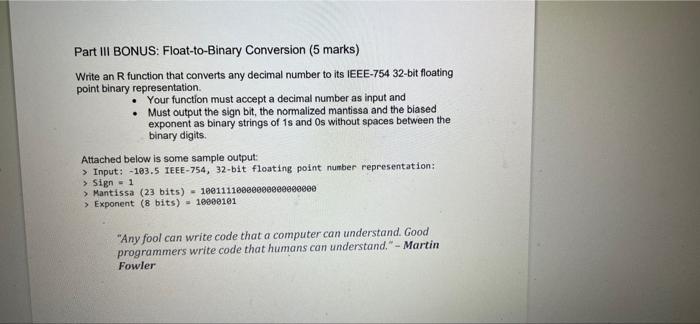Answered step by step
Verified Expert Solution
Question
1 Approved Answer
Part III BONUS: Float-to-Binary Conversion (5 marks) Write an R function that converts any decimal number to its IEEE-754 32-bit floating point binary representation.

Part III BONUS: Float-to-Binary Conversion (5 marks) Write an R function that converts any decimal number to its IEEE-754 32-bit floating point binary representation. . Your function must accept a decimal number as input and . Must output the sign bit, the normalized mantissa and the biased exponent as binary strings of 1s and Os without spaces between the binary digits. Attached below is some sample output: > Input: -103.5 IEEE-754, 32-bit floating point number representation: > Sign 1 10011110000000000000000 > Mantissa (23 bits) >Exponent (8 bits) 10000101 "Any fool can write code that a computer can understand. Good programmers write code that humans can understand." - Martin Fowler
Step by Step Solution
There are 3 Steps involved in it
Step: 1
Answer hex2bin dictx 04bformatxxsplit for x in range16 bin2hex di...
Get Instant Access to Expert-Tailored Solutions
See step-by-step solutions with expert insights and AI powered tools for academic success
Step: 2

Step: 3

Ace Your Homework with AI
Get the answers you need in no time with our AI-driven, step-by-step assistance
Get Started


